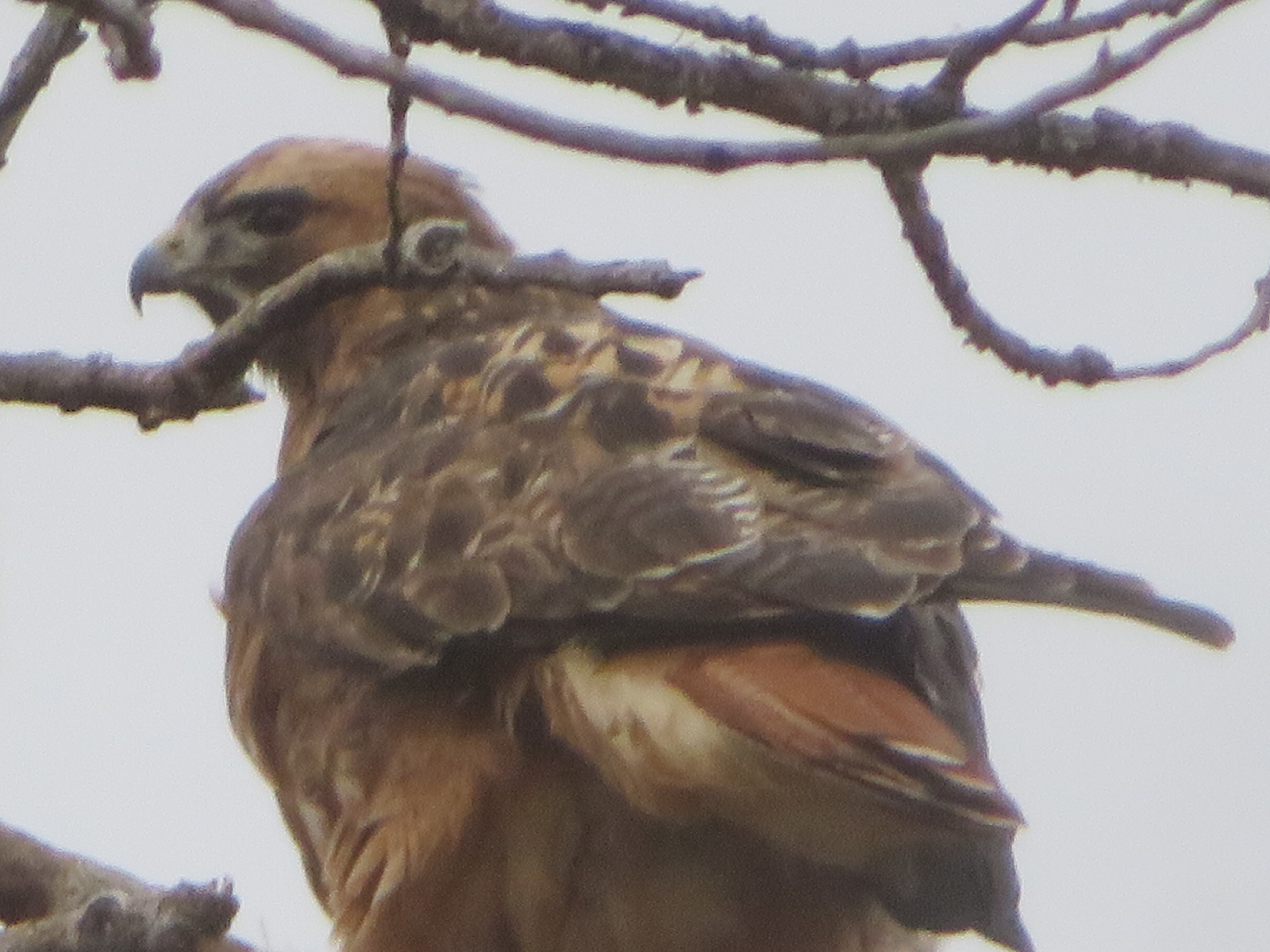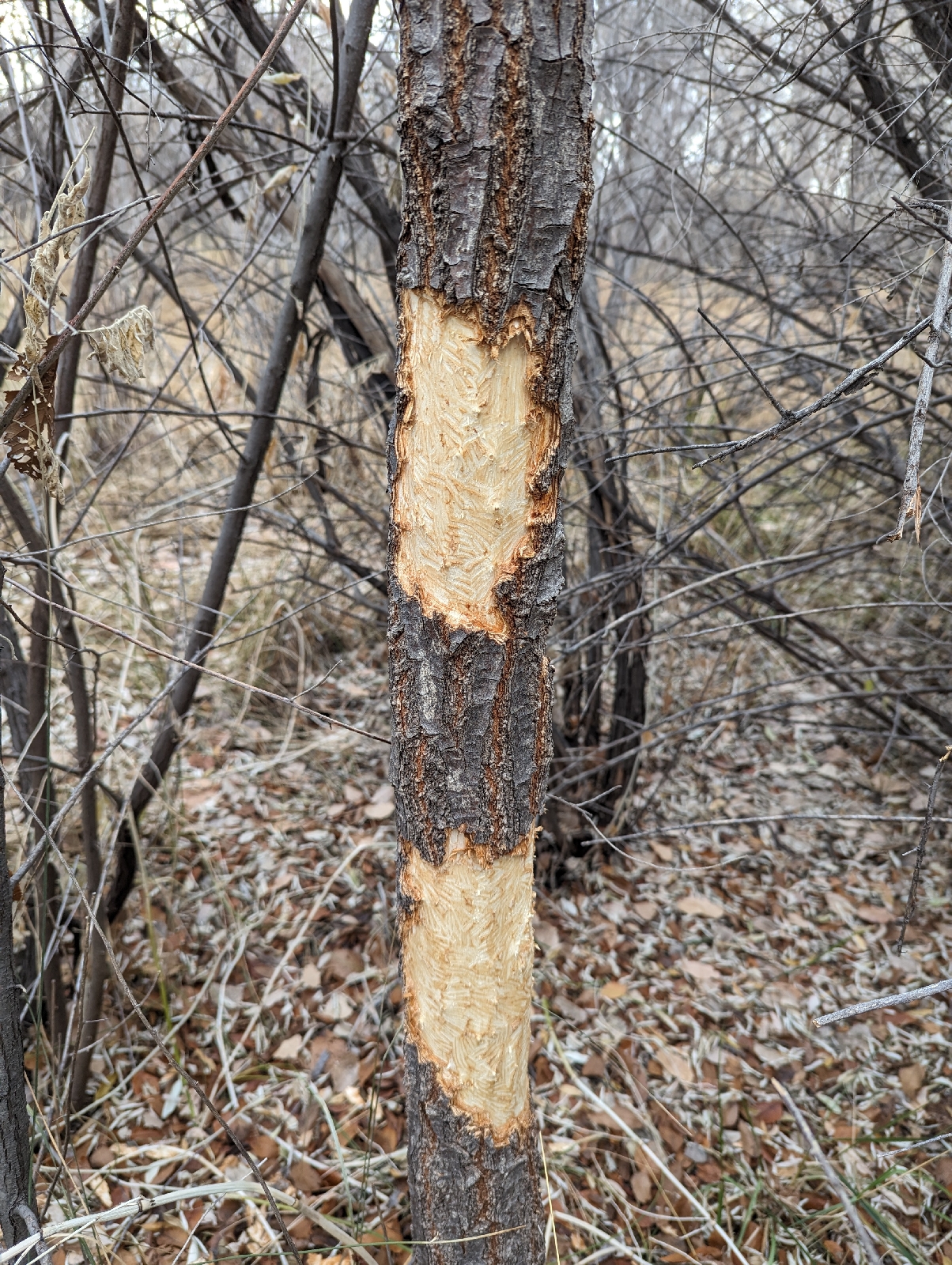“One of the first conditions of happiness is that the link between man and nature shall not be broken.”
—Leo Tolstoy
While this quote is widely attributed to him, there is nowhere in Tolstoy's works where this quote actually appears. Indeed, he was not even talking about nature in terms of ecosystems, but man and the nature of man. The internet widely misrepresents as much as it disseminates. Just like our bosque, constant effort is involved in keeping our wild places natural for the benefit of all. Things are not as they seem and a deeper sense of understanding is needed, especially to those who visit. This often means issues and problems can be kept out of sight when they should be seen and discussed.
A picture speaks a thousand words, but the interpretation never seems to be nuanced enough. Corrales is absolutely full of beauty, of which the huge majority is hidden from simple view. This wild animal is a wood duck, on of the spectacular birds that hide in the bosque. This up close view is very unique, but sad because it is far from natural.
There are many species of duck that visit Corrales. None of them stay for too long. The American widgeon is a common duck that is smaller than a mallard but often hangs out with those bold birds. Ducks are studied in relation to their
activity budget, which describes how they spend their day. All ducks need to practice foraging, not just to find food, but also to communicate and feel comfortable. Corrales does not provide the food of the larger sources like tingley ponds, or bosque del apache, but many birds seem to appreciate the calmness of the ditches.
Red tailed hawks have several hunting styles they use in the bosque. They fly along the ditches and roost from time to time to check on local mammal movement, like gophers and rabbits. They also sit in the treeline and watch the ducks and cranes flying out of the fields at dawn.
New arrivals in an area tend to fly in large, circling spirals as they survey vast swathes of territory. Most likely they are checking for other antagonists. They definitely focus their attention on large fields bounded by tall trees, their favored hunting spots.
Animals that can adapt to human activities do best in Corrales. It is a very disturbed environment, but useful to those animals that can figure out the activities of humans. This grey heron often sits at one of several favored roosts and surveys small, isolated deep pools of water.
Occasionally it will examine a neighborhood pond in the Las Brisas area, but only when there is no human activity nearby. These large birds do not feel safe on the ground because it takes a lot of time to become airborne if startled.
The El Nino weather pattern has produced a mild and wet winter so far, this also favors our stereotypical vivid sunsets. The winter solstice time means humans are outside at the right time to appreciate it, too.
The prominent Sandia mountains to the east cast a rain shadow into the Albuquerque area and often are cloud capped during the winter. We see the majority of the wet weather coming in from the west currently, this weather attracted migrant birds and changes all the ecology of the bosque both now, and for several years into the future.
Corrales is not famous for it's trees, but should be. They control the local weather and are absolutely unique to our village. Our ways of managing them is peculiar, though they can be inconvenient to people used to living cities where the trees are much more constrained. Not many people give a thought to living under their branches and leaves, until it's time to string internet cables or pick up fallen detritus, however. This bucket truck crew working on electric cables next to the only home in the area that has not clear cut its plot probably wishes the home owner would just clear these trees out of their way.

Cottonwoods are a form of popular, they have survived because they have no value to people as lumber. They grow crooked and are too soft for furniture, the wood is "cottony" and is not pretty to look at. They have evolved to live with large areas of themselves diseased and damaged, and they have impressive regenerative capabilities for a short lived tree . This tree received damage to the heartwood that allowed a fungus to invade unchecked. The living bark has curled around the wound and continues to grow as the core is slowly hollowed out by damp and rot. It will eventually kill the tree, but not for a dozen more years.

The
black locust is almost the exact opposite to the cottonwood. Its wood is dense and hard, it grows quickly and stays small. It has become naturalized all round the world from the origins in the Ozarks. Very long lived, a specimen planted in France in the 1600's is still alive today. A plant with sharp thorns and an ability to thrive in wide range of soils due to a mild toxicity and
fixing nitrogen from the air to create a fertilizer source when growing in poor soils.
The numbers of beaver have rebounded in the US. They prefer to feed on small twigs and rely on Russian olive to hide from predators such as mountain lion. This animal controls the growth of Russian olive along the ditches, but conversely seems to vanish in sections where this tree is absent.
There are many theories as to why the number of coyote sightings are up, and they could all be right. My pet theory is that they move closer to human habitation and activity when there is a mountain lion along the river. Cougars do not stray close to groups of people, and the coyotes probably benefit from this shelter as they are a prey item for these cats. While many people will never see a mountain lion in the wild, they can often catch a scent of a strong cat smell when out walking, which these animals use to mark territory, avoiding confrontations.
This is a western lynx spider. Many spiders move indoors when the weather is cold and wet. They are a peculiar mix of a daytime ambush spider that also makes a web. They specialize in small insects that are plentiful and easy to catch, but not terribly calorific.
This oily sheen is the effect of a bacteria that are "breathing" a metal, like iron or manganese. Humans and most animals use oxygen as a terminal electron receptor to bind to hydrogen and produce water. Some anaerobic bacteria can use any metal to release the energy their cells need to live. The organic matter in the water from leaves, and human sewage, keep the water acidic and metals reduced to lower activation states. The free oxygen is taken up by other bacteria and cannot precipitate the metals. But when the dissolved metal reaches the surface of the water, oxygen in the atmosphere reacts and forms a thin film of mixed metal oxides that reflects light.

These seeds are rapidly growing, taking advantage of the moisture and warmth. The seed bank contains many species just waiting for the right moment to appear. The exact types of foliage we will see for the next several years is affected by weather conditions now. Not all plants are annuals that re-sprout each year. In fact, only six percent of all plant species do.
The humble dandelion can survive for 5-10 years. They are usually one of the first plants to appear in the spring. Because dandelions are considered a weed, its
many virtues have been ignored. But once, the white sap they exude was considered as a replacement for economically important rubber. The roots can be used as a coffee substitute. The flower produces a vivid yellow dye.
Wood ducks hide under Russian olive that overhang the ditches Fishermen who leave their tackle tangled up in trees are an unexpected hazard for them. This picture shows the same duck at the beginning, but prior to the rescue that was performed by the Corrales animal control department.
The Corrales animal control is a small organization belonging to the Police department that is tasked with an impossible job. The number of loose dogs reported in the village is staggering. Add to that the numerous other domestic and farm animals, as well as the feral and wild animals, and the job is overwhelming. This department copes with a supplies budget of $2000 and a requested training budget of $500 in FY 2024. In 2021 their training budget request was $8000. Even their empty new facility has been delayed until April due to problems with the foundation. Many of the problems they encounter could be avoided, like this rescue.
Wild animals suffer more from captivity than domestic animals, and wild bird rescue is nothing like a dog rescue. Luckily, in this case the duck was released apparently unharmed. The fishermen who caused this problem are completely unaware of the problem their abandoned tackle caused, and this is not the first time this area has had problems with animals being cause up in fishing line. The number of birds in the bosque during this year's survey shows a decrease, and events like this are part of the reason why. Still, it helps that there is a network of caring professionals who are at hand ready to help when things go wrong.
Corrales bosque is not kept natural by random chance, and every day people do it harm by neglect and acts such as this that they consider harmless. That the bosque is such a charming place of nature is an amazing act of happiness for those who live here, even if the naturalness of the bosque is somewhat of a myth.




















































